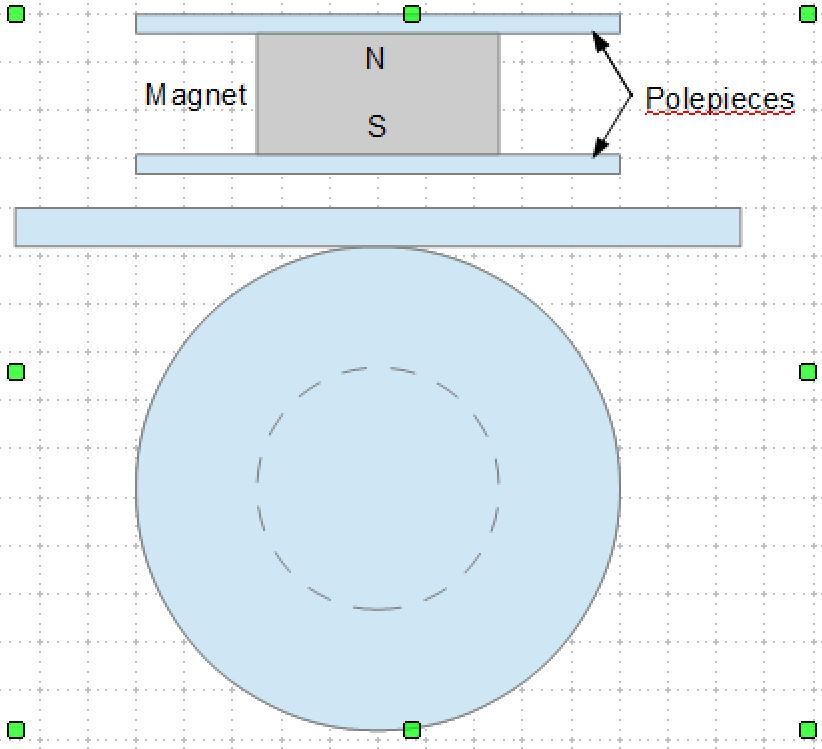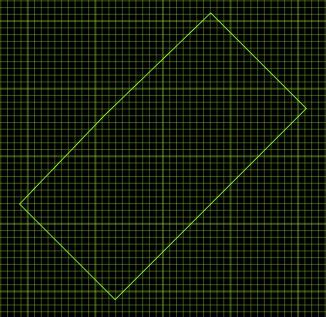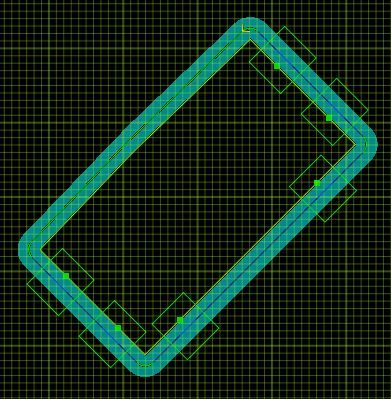Member postings for John Haine
Here is a list of all the postings John Haine has made in our forums. Click on a thread name to jump to the thread.
| Thread: Isochronous knife edge suspension? |
| 07/09/2023 19:16:49 |
"extra force is needed to get a mass moving"...inertia? |
| 07/09/2023 13:43:25 |
Tony, nice! What is the tool called please? |
| Thread: SX2P electronics |
| 07/09/2023 11:47:58 |
I have used these which are adjustable and they work well. If you insert a link using the "globe&link" icon and paste the text into the URL box you can hide all the superfluous characters, which I did with this link. Edited By John Haine on 07/09/2023 11:48:35 |
| Thread: Isochronous knife edge suspension? |
| 07/09/2023 11:42:54 |
"All models are wrong, but some are useful." https://en.wikipedia.org/wiki/All_models_are_wrong Magnetic "reluctance" has a specific meaning, being the relationship between field (measured in amps/metre) and flux (tesla) in a magnetic circuit. It isn't a measure of the magnetic attraction or "reluctance to let go". This is my mental picture of the arrangement. The rollers are two soft steel discs that form polepieces for a strong short cylindrical magnet mounted coaxially between them. If the contact is good virtually all the flux from the permanent magnet will flow through the polepieces, and establish a magnetic field in the space outside them, mainly concentrated in the air gap. The lower picture shows this hanging from a flat soft magnetic plate. Since the plate and discs are in contact at the tangent point, most of the actual flux will flow through this point as that is the path of minimum reluctance. There will be some flux in the gap close to the contact point but it will fall off rapidly with distance. If there was any imbalance between the forces on each side of the contact point then the roller would move on its own - symmetry ensures it won't move. In a real suspension the radius of the discs would be much larger and we will only need a small proportion of the circumference, but if we made sure that there was enough that the movement of the contact point is only a small proportion of the width I would guess there would still be no net magnetic force - given a suitable field analysis program we could compute this. So I don't think that it's obvious that the system won't work at least from a magnetics point of view. Edited By John Haine on 07/09/2023 11:43:50 |
| Thread: Another Arduino-controlled pendulum clock |
| 06/09/2023 20:57:47 |
So I only need to skip pendulum pulses, just seemed easier. |
| 06/09/2023 19:07:59 |
Posted by Joseph Noci 1 on 06/09/2023 16:13:19:
Posted by John Haine on 06/09/2023 15:29:30:
Ah, Joe, deeper waters here...
.............................
Thanks John: I wrestle with the distinction between a few of your statements.. If you impulse the pendulum exactly at the centre of its swing that has no effect on its period I presume this holds only if the impulse amplitude is a constant - will higher impulse amplitude decrease the period? Velocity is max at this point and a higher impulse will add to that? Or is this as I first stated - that all we are then doing is increasing the swing, not the period? Sorry I wasn't clear. Impulsing at the centre does not change the pendulum's phase instantaneously. If the impulse is just strong enough to make up for the lost energy then there is no net change to period. Impulsing Early - Is that before BDC, and late , after BDC? Correct. Why would a late impulse increase the period? Are we not increasing the velocity just after the point the bob begins slowing down? Again, if we are impulsing each period and just replacing the lost energy, the late impulse causes a phase jump that lengthens the period. Similarly an impulse that is early shortens the period. There have been designs that deliberately change the amplitude to adjust the clock, event to regulate it to an external reference. A problem with this is that the amplitude, and hence period, responds only slowly to impulse changes so the loop is very slow. Intuitively I grasp why the response is slow in this mode - Reducing the pulse energy input does not in itself slow the pendulum - it has to run itself down - but pulsing with higher amplitude - would that not increase the pendulum amplitude in the same way and at the same rate as a phase shifted pulse ( the 'early pulse' ) No, the same time constant determined by Q applies, and anyway the impulse will be applied at BDC. What a few people (well certainly me and Dave I think) are proposing is to have the pendulum running as stably as possible with controlled amplitude (and in has case eventually in a vacuum), accumulate the phase of the pendulum then digitally correct this "post hoc" based on environmental observations before displaying the "time". If i understand this correctly, then this is what I am trying to do as well.....Use my amplitude control loop to try fix the amplitude as hard as possible, use the adjusters to get close to 2sec at an environmental 'norm' (room temp, midway Baro reading, etc) and then let it run - the shift from that timing reference is then measured and used to correct computer time ( not pendulum timing) against the environmental changes. What worries me though is that from what you say, it would seem I am would be wasting my time trying to perform timing adjustments on the pendulum, such as your early/late impulses would do, by changing only the amplitude of my sine wave drive, and not its phase.... You could use amplitude to adjust its mean rate. But my approach is to have the pendulum deliberately running fast and not to adjust it to a particular period, and deal with the "rating" in code. edit - smileys... Edited By Joseph Noci 1 on 06/09/2023 16:15:17
|
| 06/09/2023 15:29:30 |
Ah, Joe, deeper waters here... A pendulum's period depends on its amplitude, the fractional rate being given by (angle^2)/16 where angle is in radians. For small angles this is nearly negligible but gets more significant as the amplitude gets larger. Remember that 1s per day is nigh on 1 in 100,000. A pendulum designed for exactly 1 second period would lose 1 second per day at an amplitude of only 0.7 degrees. This is why we want to control the amplitude. Traditional "regulators" also use rather small swings because that also reduces the sensitivity because of the square law. This is called "circular deviation" or sometimes "circular error". (CD) If you impulse the pendulum exactly at the centre of its swing that has no effect on its period. If you apply the impulse early (or advance the phase of your sine wave drive) it makes the pendulum period slightly less; if late it makes it longer. This is "escapement deviation". (ED) Its magnitude depends on the phase shift and pendulum Q and for small errors the fractional change is (phase error)/2Q. (Strictly tan(phase error)/2Q.) What one generally does is control the amplitude to keep it constant so the CD is constant and can be "adjusted out". Likewise one tries to keep the impulse phase constant so ED can be adjusted out. Many clocks have non-central impulses and when the impulse strength changes (for example because the spring unwinds), the amplitude reduces so it runs faster and the phase angle changes. If the impulse lags and gets later it slows the pendulum down and if you're lucky the two will cancel out. The ultimate is Clock B which plays these effects off against Q changes due to varying barometric pressure to compensate for that too. There have been designs that deliberately change the amplitude to adjust the clock, event to regulate it to an external reference. A problem with this is that the amplitude, and hence period, responds only slowly to impulse changes so the loop is very slow. What a few people (well certainly me and Dave I think) are proposing is to have the pendulum running as stably as possible with controlled amplitude (and in has case eventually in a vacuum), accumulate the phase of the pendulum then digitally correct this "post hoc" based on environmental observations before displaying the "time".
Edited By John Haine on 06/09/2023 15:44:59 Edited By John Haine on 06/09/2023 16:21:52 |
| Thread: A Well-Tempered Hybrid Pendulum Clock Project |
| 06/09/2023 10:01:52 |
This is not a random error so not subject to the "root-n" type of averaging if that is what you mean Michael? Anyway 0.4us is one part in 2.5million compared to a second. |
| 06/09/2023 07:25:46 |
Extract from response from Tom. "The PIC chip that I use has an internal four-phase architecture so a 10 MHz external clock becomes a 2.5 MHz internal clock and that translates to a 400 ns instruction cycle time. Thus any numerical result from a picPET is a multiple of 400 ns, which is 0.4 us. [1] For mechanical timing, even for the best ever pendulum clock, 0.4 us is plenty good enough since measurements are usually limited by the sensor or the pendulum itself." |
| Thread: turning a large diameter |
| 06/09/2023 07:22:20 |
500mm radius. |
| Thread: A Well-Tempered Hybrid Pendulum Clock Project |
| 05/09/2023 21:35:00 |
The resolution is 100ns because the thing is clocked at 10MHz. Tom quotes the "granularity" as 400ns and I have to admit I don't understand what that means! Here's a sequence of numbers from a run. 6725.56415040000
So far as I can tell the digits after the 6th decimal place are all even so multiples of 200ns, I'm not sure where the 400 comes from. I'll ask him. Whatever, it's at least an order of magnitude better than the resolution needed for my purposes! |
| Thread: Lathe tool holder needed or it's identification. |
| 05/09/2023 19:16:14 |
Dickson type. RDG may stock? |
| Thread: A Well-Tempered Hybrid Pendulum Clock Project |
| 05/09/2023 17:14:46 |
Just like to remind you of the benefits of a picPET with an oxco... |
| Thread: turning a large diameter |
| 05/09/2023 15:10:12 |
I thought I'd try generating it in CamBam for CNC milling. Assuming it would be milled from 2mm plate, the top shows the plan view and the bottom the toolpaths including 6 holding tabs, using a 3mm endmill. These not positioned on the "active" top left face as they have to be filed away after cutting. You can just about see that this face is slightly curved. Though designed initially "flat", I rotated the design to avoid one of the axes having to reverse while cutting the curve which inevitably leaves a tiny mark due to even the smallest backlash. |
| 05/09/2023 09:58:03 |
Exactly. |
| 05/09/2023 09:33:12 |
|
Like this - not to scale. Upper surface 500mm radius, exaggerated width but ~40mm, thickness into page say 10mm. There would be a blind hole in the lower face for a pendulum rod to fit into, probably carbon fibre for minimum mass. Assume the bob is on the lower end of that rod so its CG is 100mm from the top face. Material has to be steel or iron so it can be attracted to the lower face of a strong magnet that will support the bob weight. Within the above limits the amount of material in this needs to be minimised so the pendulum approximates as closely as possible to "simple". Just for information, the reason for the circular arc on the top is so the CG of the bob will swing in a cycloidal path at least up to +/- 10 degrees from vertical. |
| 05/09/2023 09:06:06 |
We don't need a 1 metre dia bit of metal, we need a small bit with a radiused face with 50cm radius of curvature on it, which would need to be about 4cm long. and maybe 6 to 10mm thick. Width behind the curved face wouldn't need to be large, less than 10mm I'd guess. |
| 05/09/2023 08:33:01 |
Cnc mill the profile. Polish by hand. Actually 1 metre approx outside diameter. |
| Thread: Isochronous knife edge suspension? |
| 04/09/2023 18:13:09 |
It would certainly be powerful if true but is demonstrably not! Michael's reductio ad absurdum is one demonstration. I think this discussion got a bit sidetracked by the notion of "any point is cycloidal" - your original point about suspending a pendulum from a magnet is very valid and with the "shoe" would be a straightforward way to make a truly cycloidal pendulum. A bit of analysis needed to estimate the errors due to "compounding". |
| 04/09/2023 17:41:42 |
I have had another read through Woodward's analysis. He mainly looks at the case where the roller runs on the top of a flat plane (or knife edges in Dave's original proposal). The pendulum rod is fixed to a point on the roller so its axis passes through the roller centre, and the rod is significantly longer than the roller radius. He shows that for this case the circular deviation is increased by a factor (1+4r/L) compared to an ordinary suspension for small swing angles. For the case where the roller is like a hoop suspended from the plane (by magnetism for example as Dave proposes) the same analysis applies, except that the circular deviation is reduced. Obviously you would want that to be reduced to zero, and he shows that for this to be true the bob mass has to be on the periphery of the hoop, when of course its motion is cycloidal. For longer rods I think it looks like the circular deviation will get larger the longer the rod and be possibly of opposite sign to its normal value. I think the overall conclusion must be that roller suspension can only cancel CD for the case of a "suspended hoop" with the bob on its periphery, when the motion is cycloidal. This is only true for a simple pendulum anyway, all real pendulums are compound. But I guess Duncan's idea could be used. Have a very light rod of carbon fibre with the bob at one end; and a steel "shoe" with a cylindrical "sole" at the other of radius equal to half the rod length and long enough to allow for the intended maximum angle. Though the shoe would have significant weight it would not contribute much to the moment of inertia since the axis of rotation is on its upper surface. Edited By John Haine on 04/09/2023 17:49:00 |
Want the latest issue of Model Engineer or Model Engineers' Workshop? Use our magazine locator links to find your nearest stockist!
Sign up to our newsletter and get a free digital issue.
You can unsubscribe at anytime. View our privacy policy at www.mortons.co.uk/privacy
- *Oct 2023: FORUM MIGRATION TIMELINE*
05/10/2023 07:57:11 - Making ER11 collet chuck
05/10/2023 07:56:24 - What did you do today? 2023
05/10/2023 07:25:01 - Orrery
05/10/2023 06:00:41 - Wera hand-tools
05/10/2023 05:47:07 - New member
05/10/2023 04:40:11 - Problems with external pot on at1 vfd
05/10/2023 00:06:32 - Drain plug
04/10/2023 23:36:17 - digi phase converter for 10 machines.....
04/10/2023 23:13:48 - Winter Storage Of Locomotives
04/10/2023 21:02:11 - More Latest Posts...
- View All Topics
- Reeves** - Rebuilt Royal Scot by Martin Evans
by John Broughton
£300.00 - BRITANNIA 5" GAUGE James Perrier
by Jon Seabright 1
£2,500.00 - Drill Grinder - for restoration
by Nigel Graham 2
£0.00 - WARCO WM18 MILLING MACHINE
by Alex Chudley
£1,200.00 - MYFORD SUPER 7 LATHE
by Alex Chudley
£2,000.00 - More "For Sale" Ads...
- D1-3 backplate
by Michael Horley
Price Not Specified - fixed steady for a Colchester bantam mark1 800
by George Jervis
Price Not Specified - lbsc pansy
by JACK SIDEBOTHAM
Price Not Specified - Pratt Burnerd multifit chuck key.
by Tim Riome
Price Not Specified - BANDSAW BLADE WELDER
by HUGH
Price Not Specified - More "Wanted" Ads...
Do you want to contact the Model Engineer and Model Engineers' Workshop team?
You can contact us by phone, mail or email about the magazines including becoming a contributor, submitting reader's letters or making queries about articles. You can also get in touch about this website, advertising or other general issues.
Click THIS LINK for full contact details.
For subscription issues please see THIS LINK.
Model Engineer Magazine
- Percival Marshall
- M.E. History
- LittleLEC
- M.E. Clock
ME Workshop
- An Adcock
- & Shipley
- Horizontal
- Mill
Subscribe Now
- Great savings
- Delivered to your door
Pre-order your copy!
- Delivered to your doorstep!
- Free UK delivery!













 Register
Register Log-in
Log-in


